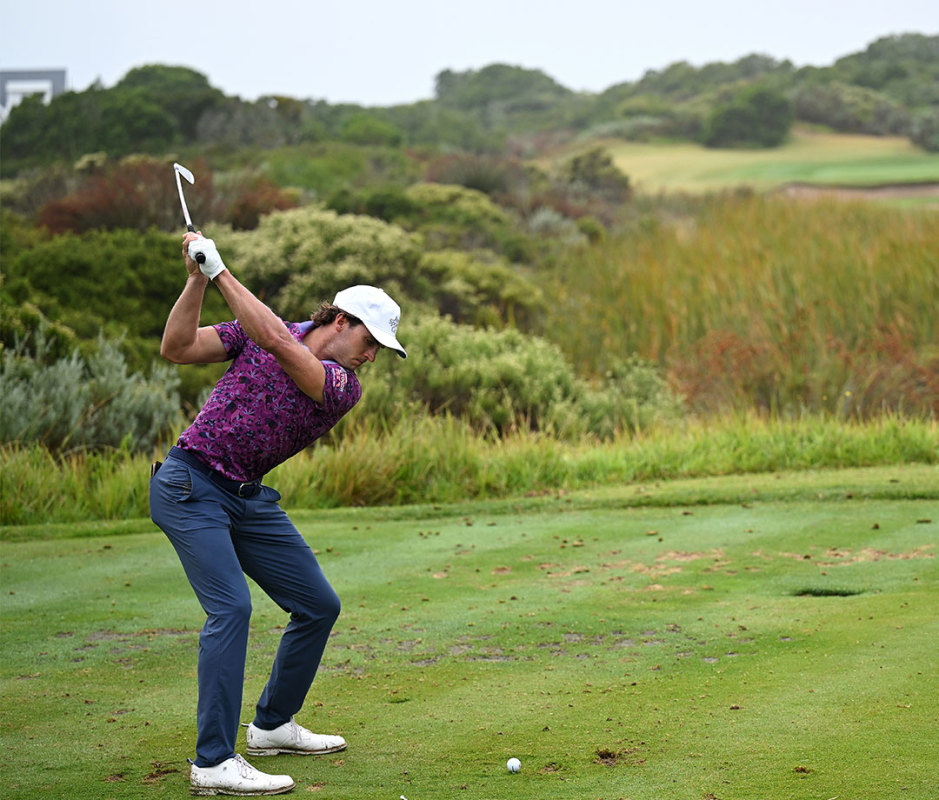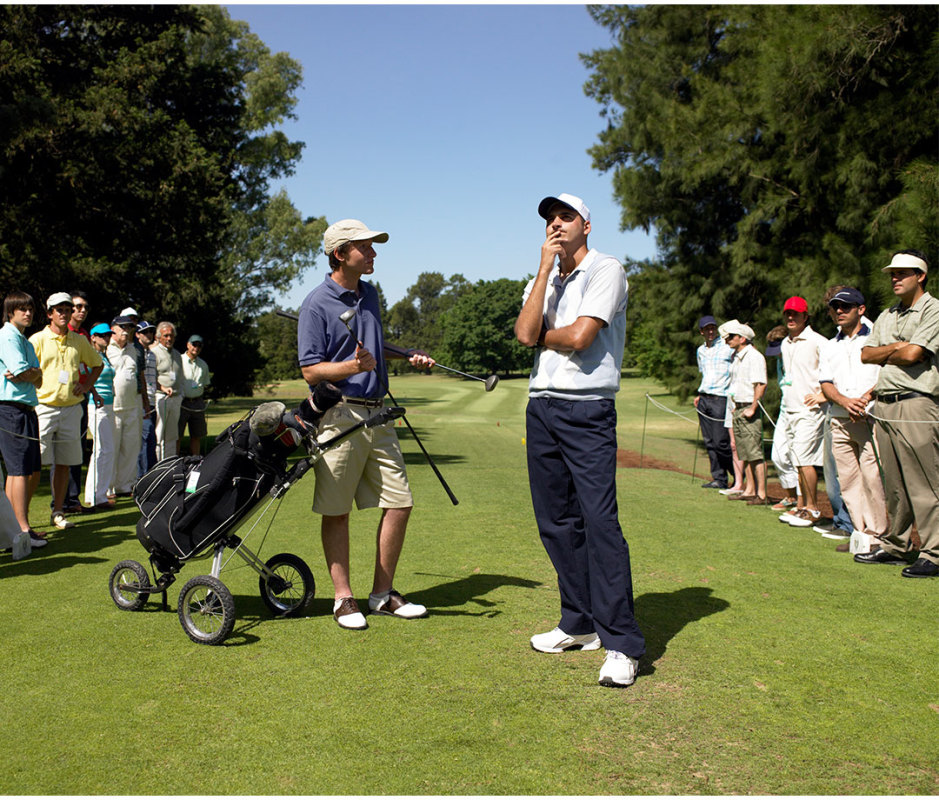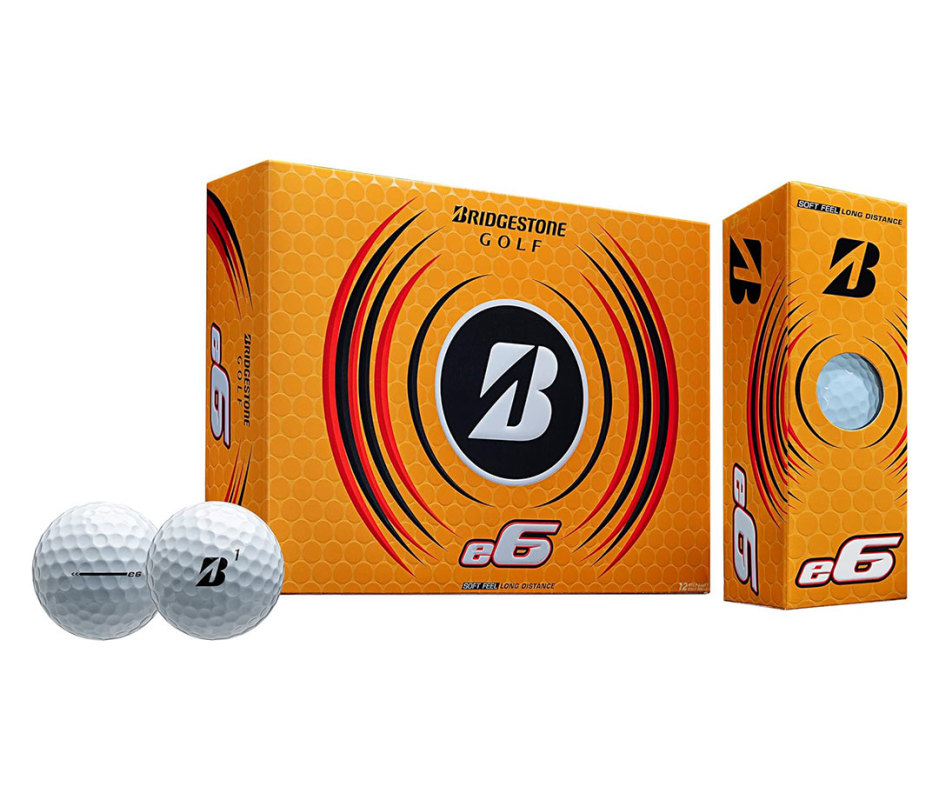How to Golf: These 5 Easy Steps Will Get You Hooked on This Sport
Golf is anything but easy. Sure, the pros on TV make it look like a cakewalk, but players need to swing a club 100 mph and connect with a ball a little over an inch and a half in diameter. The margin of error is minuscule and the difference between a shot blasted down the fairway and one sliced 60 yards into the trees is mere millimeters.
But here’s the thing: The first time you hit a pure shot, one that does just what you’d dreamed up before starting your swing, is one of the most rewarding sensations in sport. The contact radiates through the club, up the shaft into your fingers, and through your whole body, letting you know how good it was before you even look up. It’s like a tuning fork that tickles your soul.
Related: Best Golf Courses in All 50 States: Where to Tee Up in America
It’s not just golf’s physical challenge that hooks players. The game tests the mind even more. To quote the game’s late, great king, Arnold Palmer, golf is “deceptively simple and endlessly complicated.” Not only does a player need to execute a swing that yields predictable results, they also have to think and plot their way around the course in order to score well. But that’s why the game is so beguiling. No matter how long you play or how good you get, you can never “win” golf. Every time you play, the course is different, the weather is different—and you’re different. The equation is constantly shifting.
We consulted with a top golf pro to get new players into the game without feeling like imposters. We’ve also hand-selected six indispensable pieces of golfing gear for you to feel properly equipped. If you’re also up for learning some other top summer sports, see our guides on how to surf, how to rock climb, how to mountain bike, and how to fly-fish.
Men’s Journal aims to feature only the best products and services. We update when possible, but deals expire and prices can change. If you buy something via one of our links, we may earn a commission.

Stuart Franklin/Getty Images
Meet Our Golf Expert
James Nicholas is a professional on the Korn Ferry and DP European Tours. His expert advice on how to take up the game efficiently and enjoyably won’t make you the next Tiger Woods, but it’ll get you out on the course and having a blast in no time.
How to Golf in 5 Steps

David Madison/Getty Images
1. Learn the Basic Swing
The golf swing takes time to develop but you have to start somewhere. “Honestly, just get out there and start swinging the club because you’re not gonna learn by watching videos or other people,” says James Nicholas, a professional on the Korn Ferry and DP European Tours. “You’ve got to get the club in your hand and start trying to hit the golf ball.” Even if you’ve played other sports, hand eye coordination is different when you’ve got a club attached to your arms, according to Nicholas—as is sequencing your body movement in the swing. “So the first step is definitely just to get out there and start whacking until you make contact.”
For those experimenting with golf, Nicholas suggests a couple of trips to the range, roughly once a week for a month, to see if the game is a fit. But for anyone who feels the hook, the sooner you can take lessons from a professional instructor, the better. “That’s gonna be the best way to prevent bad habits and develop the good ones,” he says. Lessons will help players unlock fundamentals like the grip, takeaway, backswing, downswing, impact and follow-through.

Michael Blann/Getty Images
2. Get a Handle on the Rules and Etiquette
The official rules of golf are a bit overwrought and anachronistic. Very few players beyond professional and elite amateur circles abide by or even understand all of them.
“There are a million golf rules and only a handful of people who actually know every single one,” says Nicholas. “That’s why we’ve got rules officials at every single professional event.” But amateurs only need to apply the basics in the beginning.
On the tee, place your ball behind the markers no more than two club lengths. If you lose it in the woods, in the water, or you just can’t find it, Nicholas suggests newbies drop another ball near where you lost sight of it and add a stroke to your score.
“The goal for beginners is just to have fun and enjoy the game,” he says. “Eventually, they’ll learn the rules as they play with others.”
Beyond the written rules, golf has some traditions we call etiquette. Much of the stuffiness has fallen by the wayside over the last few decades. Today, you can play music on many courses and dress codes have become quite lax. But players should wear a collared shirt (tucked in) and denim is still a no-no at most clubs, public and private.
Etiquette-wise, there are some other unwritten statutes: “Don’t talk when people are swinging, don’t step in their lines [routes to the hole on the putting green], and play quickly,” says Nicholas, because no one likes a slow golfer. “You can be bad—as long as you play fast.”

Cavan Images/Getty Images
3. Head to the Course
When it’s actually time to play golf, get to the course early. Not only do you have to check in and pay at the clubhouse, but you’ll want to warm up to get the muscles moving and a bit of practice before heading out.
No fewer than 10 minutes before the reserved tee time, players should check in with the starter, who lets groups know it’s their turn to begin. There, you’ll find a score card, which is not just for marking your strokes, but also provides information, including every hole’s “par”—number of strokes it should take to complete the hole—and its difficulty, ranked from one (hardest) to 18 (easiest). It also indicates how long the holes are from the different tee boxes, which players choose based on their skill level. Newbies should begin playing from the most forward (shortest distance) tees and work their way back as they become better golfers.
Courses are generally designed to be walked but many players choose to ride in carts (buggies if you’re in Europe or the UK). For those who have never driven one, it’s basically a small car with a dedicated space for your bag of clubs on the back. First timers will want to ask for help strapping their bag in and how to use the GPS system, if there is one.
Related: What It’s Like to Play Pinehurst No. 10—the Resort’s Wildest Ride Yet
Like driving on the road, there are some basic rules. Stay on the cart paths as long as possible and don’t use it on grass closer than 50 yards from the green—and never, ever drive onto the putting surface. Be mindful of bunkers and water that could damage the cart and the course. When you stop, always engage the parking brake, a small switch on the brake pedal—otherwise gravity will do its thing.
Like any sport, golf has some lingo, and newbies will pick most of it up from other players along the way. A quick primer: You start the hole on the tee (or tee box) and attempt to hit the ball either to the fairway (closely mown grass) or green (putting area). The long grass that lines the fairway and the greens is called the rough. Pits of sand that dot golf courses are known as bunkers (some call them sand traps), and the holes (a.k.a. cups) are marked with a flag stick (or pin) to help make them visible from a distance.

Stuart Franklin/Getty Images
4. Find a Practice Routine That Works for Every Club
To gain proficiency, players need to practice, practice, practice. Nicholas recommends anyone new to the game focus their range sessions on ball striking.
“Start with a higher lofted club, say a sand wedge or a pitching wedge and hit 10 to 15 shots,” he says. “Get a feel for that club, then move on to a seven iron, and slowly make your way up to the longer clubs.”
The shorter clubs are easier to hit, plus starting small gives your body time to warm up and move faster before you get to longer distance clubs where you need more speed.
Nicholas recommends those new to the game allocate 70 percent of their practice to hitting full shots on the range and 30 percent working on their short game—pitching, chipping and putting. He also suggests beginners spend most of that 70 percent hitting a six or seven iron.
“Get that mid-iron swing and go from there,” he says. “When I say ‘get that down,’ I mean making sure you can hit the ball every time. Make contact and hit the center of the face, because that’s the most important thing in golf.”

Jordan Siemens/Getty Images
5. Start Lowering Your Score
Hopefully after some serious range time and multiple rounds under your belt, you’ve minimized the double and triple bogeys. Odds are you’ve marked some pars down on the scorecard and perhaps the odd birdie.
“Once you start getting the hang of hitting the ball in the center of the face, your practice time should shift to 50-50—full shots and short game,” Nicholas says. “As you get really good, it should invert to 70 percent of your time spent within 100 yards.”
Scores will really drop once you learn to putt. “Speed is by far the most important thing about putting,” Nicholas says. “If you can limit your three putts, you’re gonna be a much better golfer.”
While learning to read greens and their breaks (how much the ball will turn as it rolls) is important, the key to minimizing your strokes on the green is speed control. He suggests focusing your pre-game practice on trying to get long putts within a one-to-two foot circle of the hole from a variety of angles and conditions—uphill, downhill, left break, right break, etc.
Finally, as golfers grow into the game, they need to be okay with failing. That’s part of the game’s charm—there’s always a chance for recovery. Three lousy shots and one good one still make par.
“So, don’t be afraid to take risks, even if you think you might embarrass yourself,” Nicholas says. “Golf is, in my opinion, the hardest sport in the world. It’s okay to make mistakes. You’ll learn and grow from them, and ultimately become a better golfer.”
Best Golf Gear to Get Started
The Driver: PING G430 MAX 10K

Courtesy image
Players new and old dream of routinely dropping bombs off the tee. But hitting a ribbon of closely mown grass somewhere between two and three football fields away is tough, even for the best in the world.
The PING G430 MAX 10K is an absolute fairway finder. Thanks to its more than 10,000 g-cm² combined MOI (Moment of Inertia—how golf club forgiveness is measured), it’s easy to hit straight. The design also helps newer players and golfers with slower swing speeds get the ball up in the air, so drives can fly a bit farther.
The Irons: PXG Black Ops

Courtesy image
A new set of irons is the biggest financial investment players typically make, apart from lessons—or a club membership. So, we recommend getting a professional fitting every time you upgrade. But beginners should check out PXG’s Black Ops irons. These sticks use a dual cavity design and a XCOR2 polymer filling to add forgiveness, increase distance and improve feel and response.
The Putter: Callaway AI-One Series

Courtesy image
Green feel is generally thought of as more art than science, but technology can definitely help a player’s putting. Callaway uses artificial intelligence to bake in forgiveness to the face of its AI-One series of putters. So, balls roll out more consistently when you miss the center of the face.
The brand makes a variety of models to fit different spotting styles, stroke arcs, and visual preferences. We recommend trying a few in person, so the wand can help choose the wizard.
The Ball: Bridgestone E6

Courtesy image
Novice golfers tend to lose balls by the dozen. So players new to the game might not want to shell out $50-plus for a box of tour balls. But golfers learn from every shot, even the bad ones, so consistency is key.
The Bridgestone E6 balls feature a seamless surlyn cover for durability and a large soft core that provides distance off the tee. Plus, at half the price of a dozen tour balls, they represent a nice value.
The Shoes: ECCO Biom Hybrid

Courtesy image
Generally, public golf courses allow players to tee it up in regular old sneakers. But once you’ve committed to the game, you’ll want to invest in some good golf shoes and ECCO makes some of our favorites. Its Biom Hybrid is extremely comfortable, light, waterproof and breathable. Plus, unlike your street shoes, the soles use TPU traction bars that grab the ground at 800 angles to keep your feet stable during the golf swing.
The Polo: Peter Millar Cadence

Courtesy image
While some golf courses allow you to play in a T-shirt, don’t be that guy. Pick up a nice polo. Peter Millar’s Cadence version is lightweight, moisture-wicking, and stretches with your golf swing. Plus, the contrasting collar and sleeves add a touch of style that gives off old school player vibes even though you’re new to the game.
